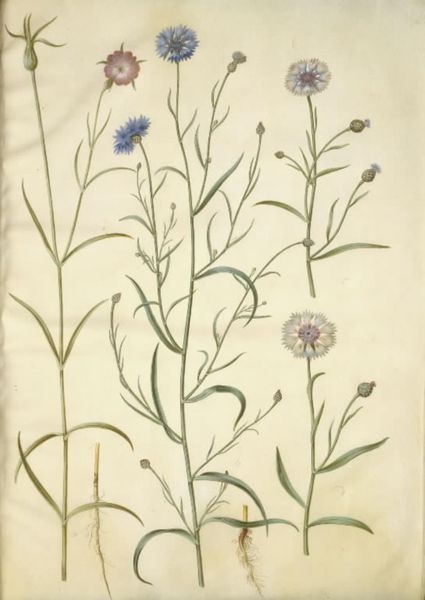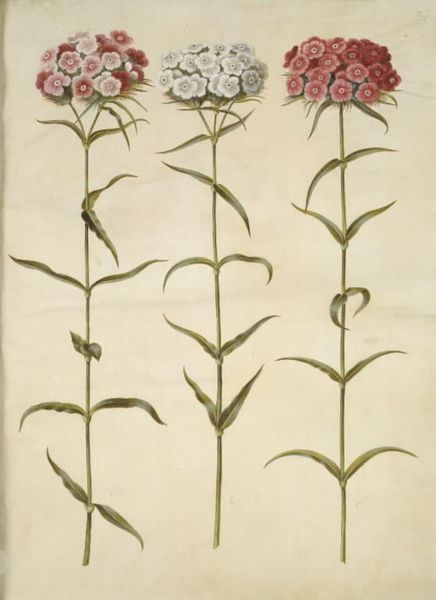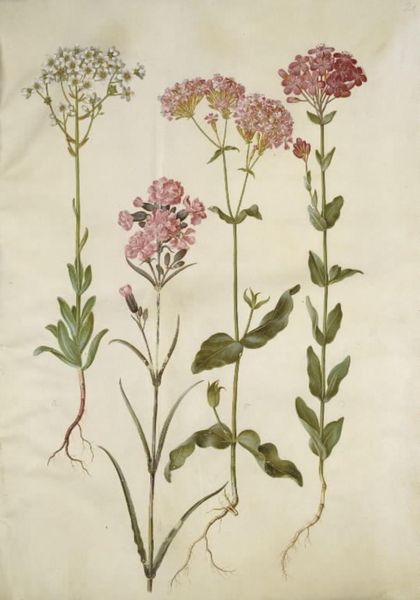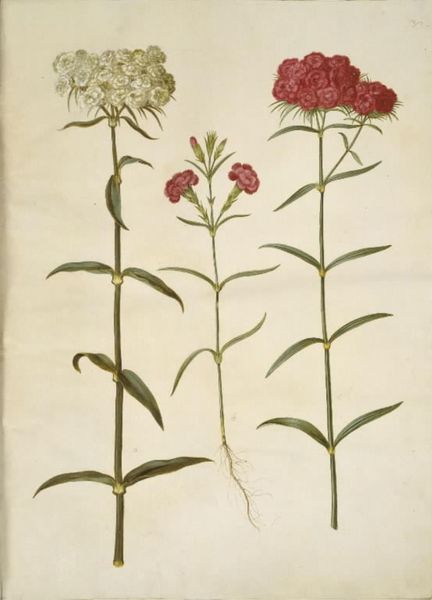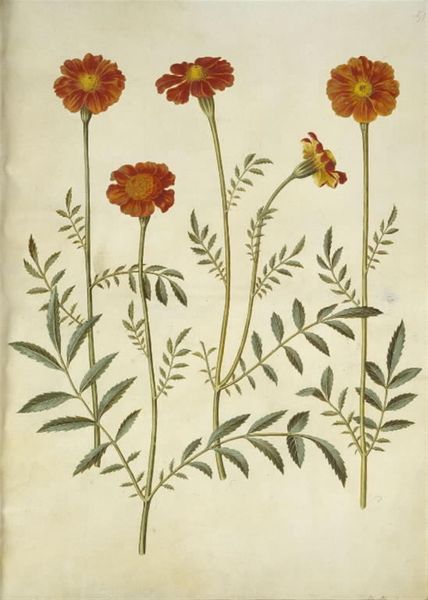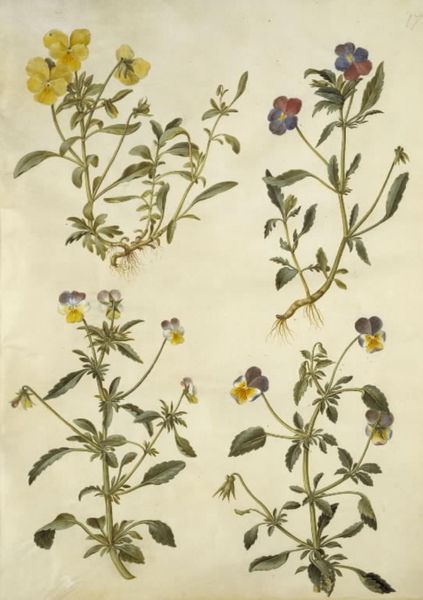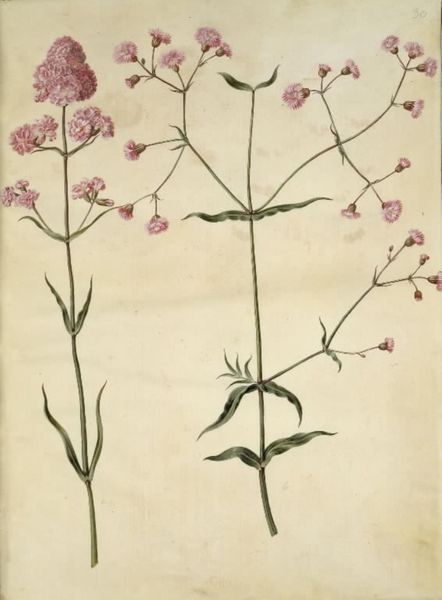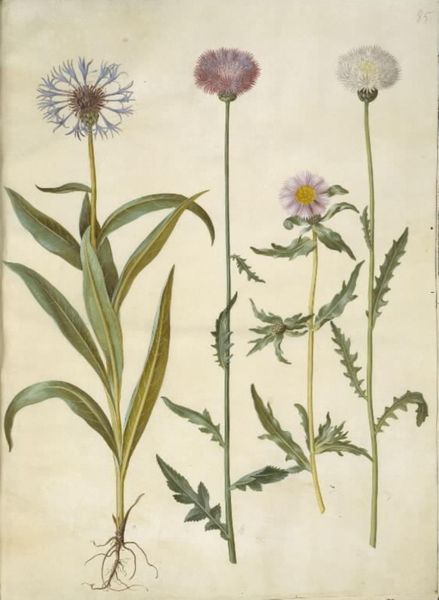
drawing, gouache, paper, watercolor
#
drawing
#
toned paper
#
water colours
#
gouache
#
paper
#
watercolor
#
watercolour illustration
#
northern-renaissance
#
botanical art
Dimensions: 505 mm (height) x 385 mm (width) (bladmaal)
Here we see a botanical study of Centaurea Cyanus, or cornflower, made by Hans Simon Holtzbecker in the 17th century. The medium is watercolor on vellum, a parchment made from animal skin. Holtzbecker’s technique is meticulous. The layering of pigment gives a sense of depth, particularly in the delicate petals and the subtle veining of the leaves. Vellum, prepared through scraping, stretching, and treating animal hide, provides a smooth, absorbent surface ideal for such detail. This wasn’t just art, but science. Botanical illustration was crucial for identifying medicinal plants and understanding the natural world. There was a high demand for accurate, detailed images, which required not only artistic skill but also scientific knowledge. The labor-intensive process, from preparing the vellum to applying the final brushstroke, speaks to the value placed on this kind of knowledge in Holtzbecker’s time. Next time you see a work like this, remember the intersection of art, science, and craft. It is the product of skilled hands, time-honored techniques, and a deep engagement with the natural world.
Comments
No comments
Be the first to comment and join the conversation on the ultimate creative platform.

